
AI-generated content vs. human creativity is a hot topic in today’s digital landscape. As artificial intelligence continues to evolve, many wonder whether it can truly replace human creativity. AI-powered tools can generate articles, stories, and even artwork, but do they match the originality and depth of human-made content? This debate affects writers, marketers, and artists alike, raising concerns about authenticity, uniqueness, and emotional depth. Some argue that AI-generated content is efficient and scalable, while others believe human creativity remains unmatched. So, what are the key differences between AI-generated content and human creativity? This article explores seven critical aspects that distinguish the two, helping you understand their strengths and weaknesses.
1. AI-Generated Content vs. Human Creativity: The Core Difference 🎭
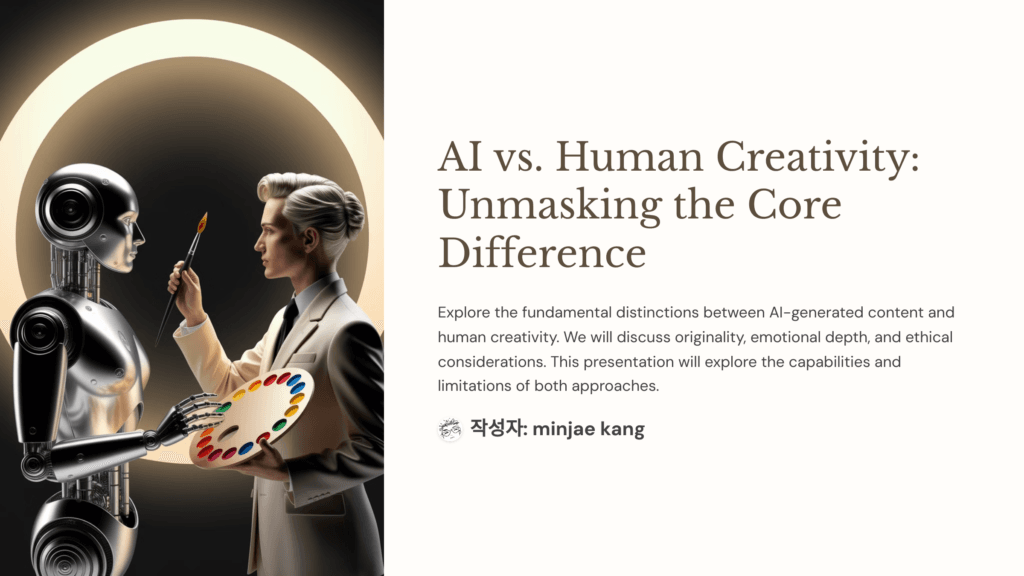
The fundamental distinction between AI-generated content and human creativity lies in their origin. AI content is produced based on algorithms, patterns, and pre-existing data, whereas human creativity stems from personal experiences, emotions, and cultural influences. AI lacks intrinsic motivation or emotional intelligence; it merely predicts what should come next in a sequence. Human-created content, on the other hand, reflects thought processes, originality, and personal perspectives, making it more relatable and emotionally engaging.
🔗 Read More: AI and Creativity – Are Machines Truly Creative?
2. Originality and Uniqueness 🧩
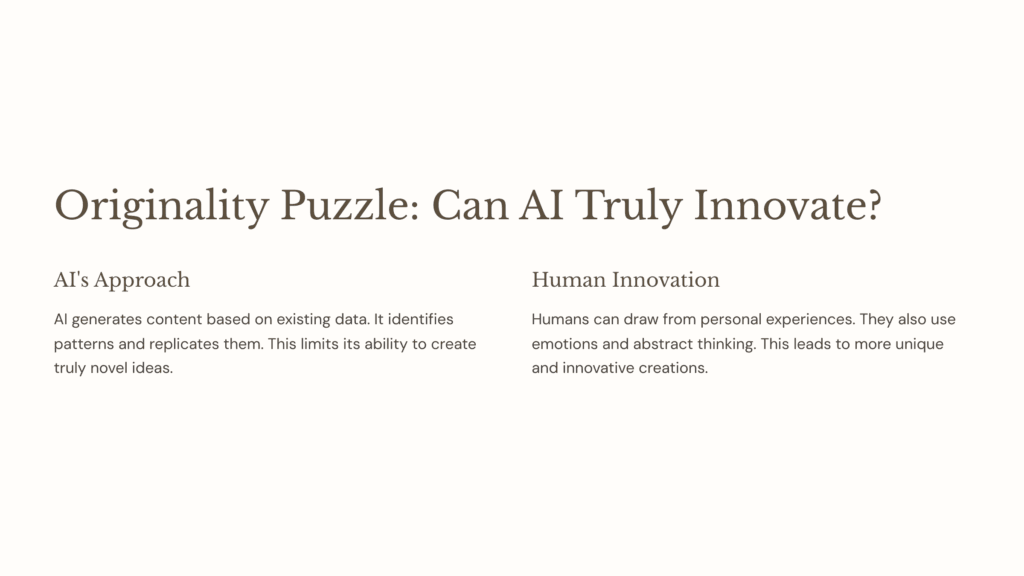
AI generates content by analyzing vast amounts of data and synthesizing existing ideas. However, it struggles to produce truly original works. Since AI lacks consciousness, it cannot create something entirely new—it can only remix and reassemble what already exists. Conversely, human creativity introduces fresh ideas, pushing the boundaries of innovation. Writers, artists, and musicians often derive inspiration from personal experiences, leading to unique expressions that AI cannot replicate.
🔗 Read More: How AI Impacts Originality in Content Creation
3. Emotional Depth and Storytelling 💖
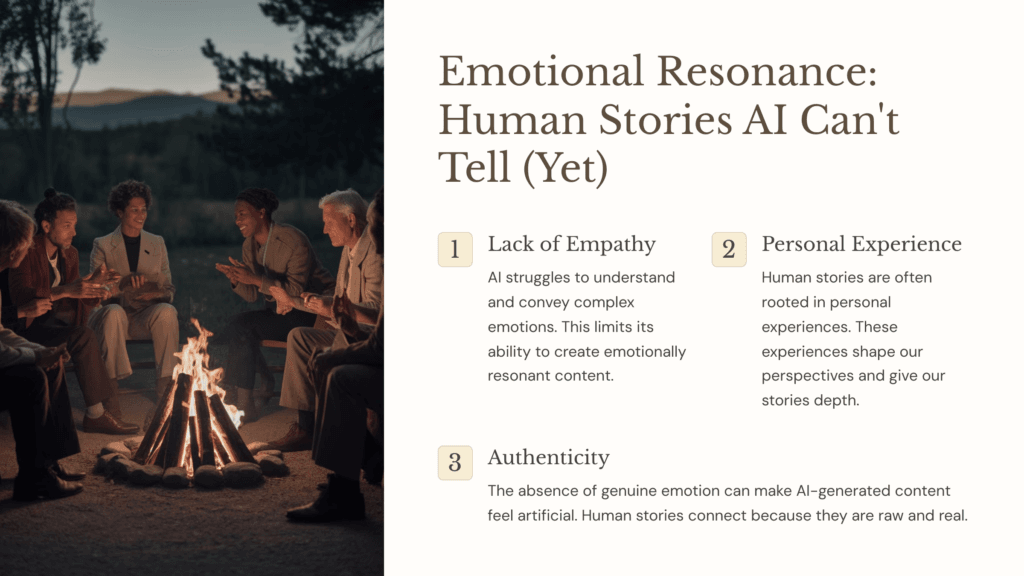
One of the biggest shortcomings of AI-generated content is emotional depth. AI can mimic tone and style, but it lacks true emotions. Human creativity allows for deep storytelling, emotional connections, and nuanced expression. A human writer crafts narratives with empathy, humor, and personal touch, making the content resonate with readers on a deeper level. AI, on the other hand, lacks personal experience, making its storytelling feel formulaic or mechanical.
🔗 Read More: Why Storytelling Needs the Human Touch
4. Efficiency vs. Quality ⚡
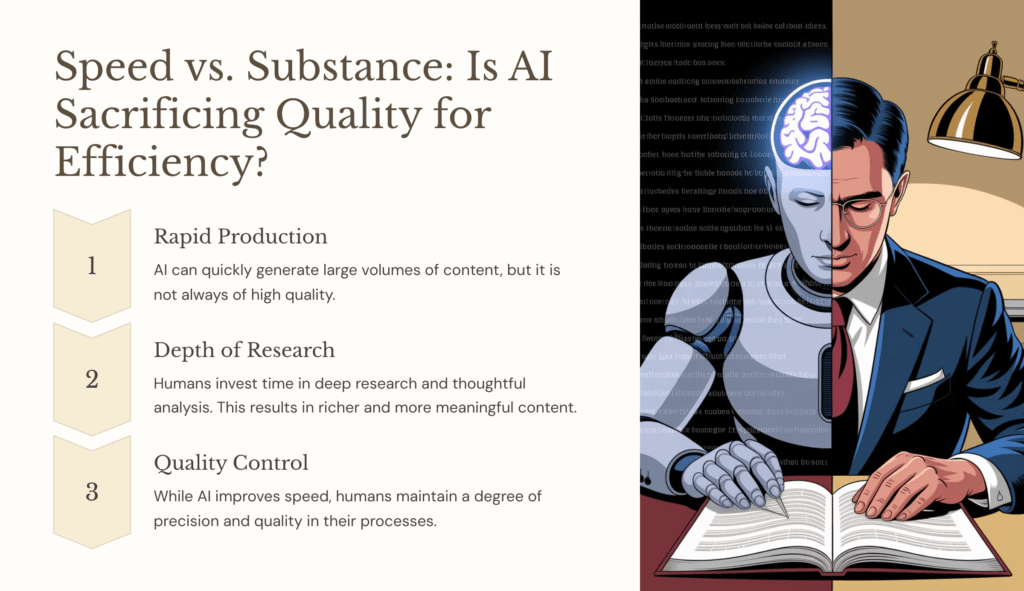
AI-generated content excels in speed and efficiency. AI tools can produce thousands of words in seconds, making them ideal for large-scale content production. However, this often comes at the cost of quality. While AI can generate grammatically correct text, it may lack coherence, flow, or deep insight. Human writers take time to craft well-researched, thoughtful content that aligns with audience expectations. The trade-off between speed and quality is a key consideration for businesses and content creators.
🔗 Read More: Balancing Speed and Quality in AI Writing
5. Adaptability and Context Understanding 🌍
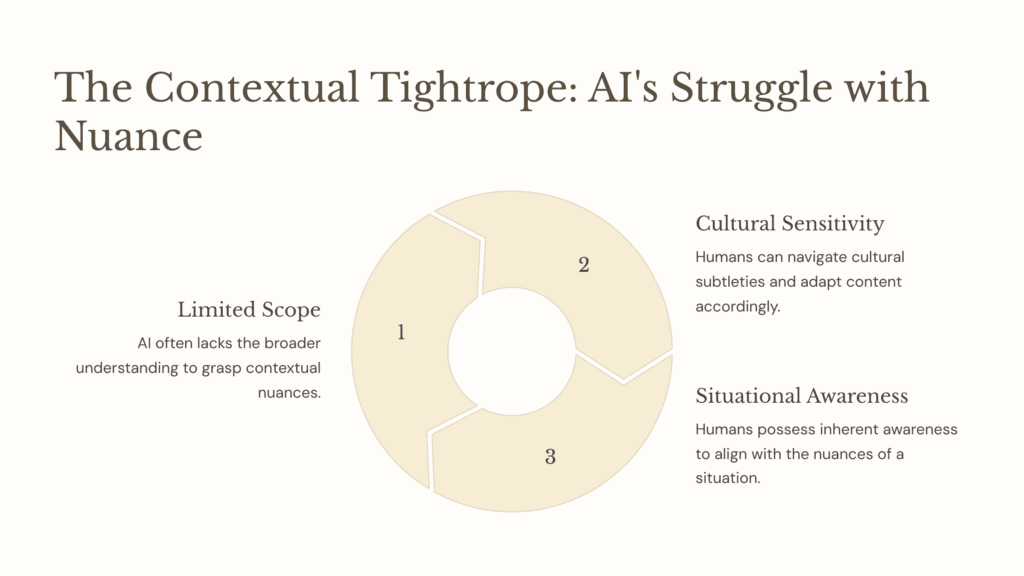
AI relies on pre-trained models and data patterns, making it less adaptive to nuanced topics. It often struggles with sarcasm, humor, and cultural references. Humans, on the other hand, can quickly adapt to different writing styles, tones, and complex ideas. AI may misinterpret slang, idioms, or sensitive topics, leading to awkward or inappropriate content. Human writers bring cultural awareness and contextual understanding, making their work more relevant and engaging.
🔗 Read More: How AI Handles Context and Language
6. SEO and Keyword Optimization 🔍
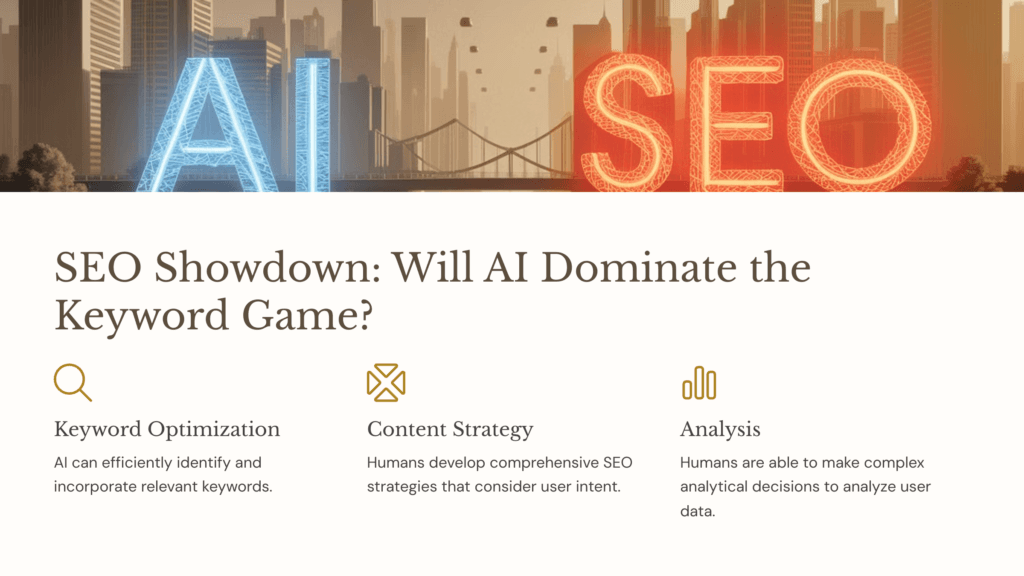
AI-generated content is often optimized for SEO and keyword density, making it useful for digital marketing. AI tools analyze search trends and insert relevant keywords seamlessly. However, keyword stuffing and unnatural phrasing can still occur. Human writers understand the balance between SEO and readability, ensuring content is both engaging and optimized for search engines. This human touch helps create content that ranks well without compromising user experience.
🔗 Read More: SEO and AI-Generated Content – Best Practices
7. Ethical Concerns and Authenticity ⚖️
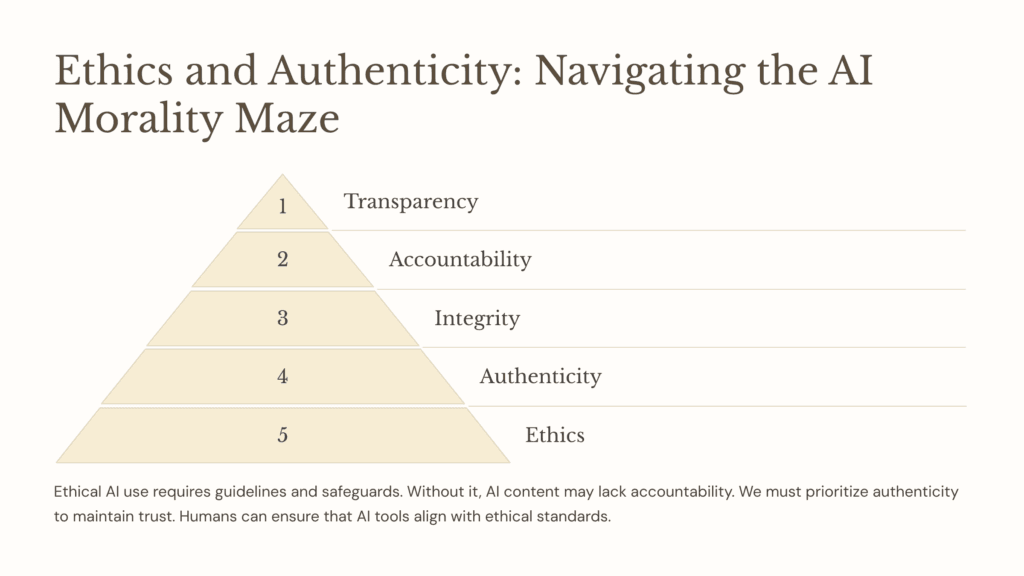
The rise of AI-generated content raises ethical questions about authorship, originality, and misinformation. If AI writes an article, who owns the content? Should AI-generated works be disclosed as such? Additionally, AI can unintentionally spread misinformation if it pulls from biased or inaccurate sources. Human creativity is rooted in personal integrity, research, and ethical responsibility. Ensuring transparency in AI-generated content is crucial for maintaining trust and credibility in digital media.
🔗 Read More: Ethical Considerations in AI Content Creation
Final Thoughts: Can AI Replace Human Creativity?
While AI-generated content offers speed, efficiency, and scalability, it cannot replace human creativity, emotional intelligence, and originality. AI serves as a powerful tool to assist writers, marketers, and content creators, but human input remains essential for quality, authenticity, and ethical considerations. As AI continues to improve, the best approach is a hybrid model—leveraging AI for efficiency while maintaining human oversight for creativity and depth.
Would you trust AI-generated content over human-created work? Let us know your thoughts in the comments!
FAQ: AI-Generated Content vs. Human Creativity
❓ Can AI-generated content be considered creative?
🔹 AI can mimic patterns and styles but lacks true creativity, as it cannot generate entirely new ideas from personal experience.
❓ Is AI-generated content better for SEO?
🔹 AI can optimize for SEO efficiently, but human-written content balances readability and optimization better.
❓ Does AI understand emotions in writing?
🔹 AI can analyze sentiment but does not truly “feel” emotions, making its storytelling less authentic.
❓ Are AI-generated articles plagiarism-free?
🔹 AI tools synthesize information from various sources, but there is still a risk of unintentional duplication.
❓ Can AI-generated content replace human writers?
🔹 AI can assist with content creation but cannot fully replace human creativity and critical thinking.
❓ What industries benefit most from AI-generated content?
🔹 Digital marketing, news aggregation, and e-commerce often use AI for quick content generation.
❓ How can human writers compete with AI-generated content?
🔹 By focusing on originality, emotional depth, and high-quality storytelling, human writers remain valuable.
❓ Should AI-generated content be disclosed?
🔹 Ethical transparency is important, and many platforms now require AI-generated content disclosures.
